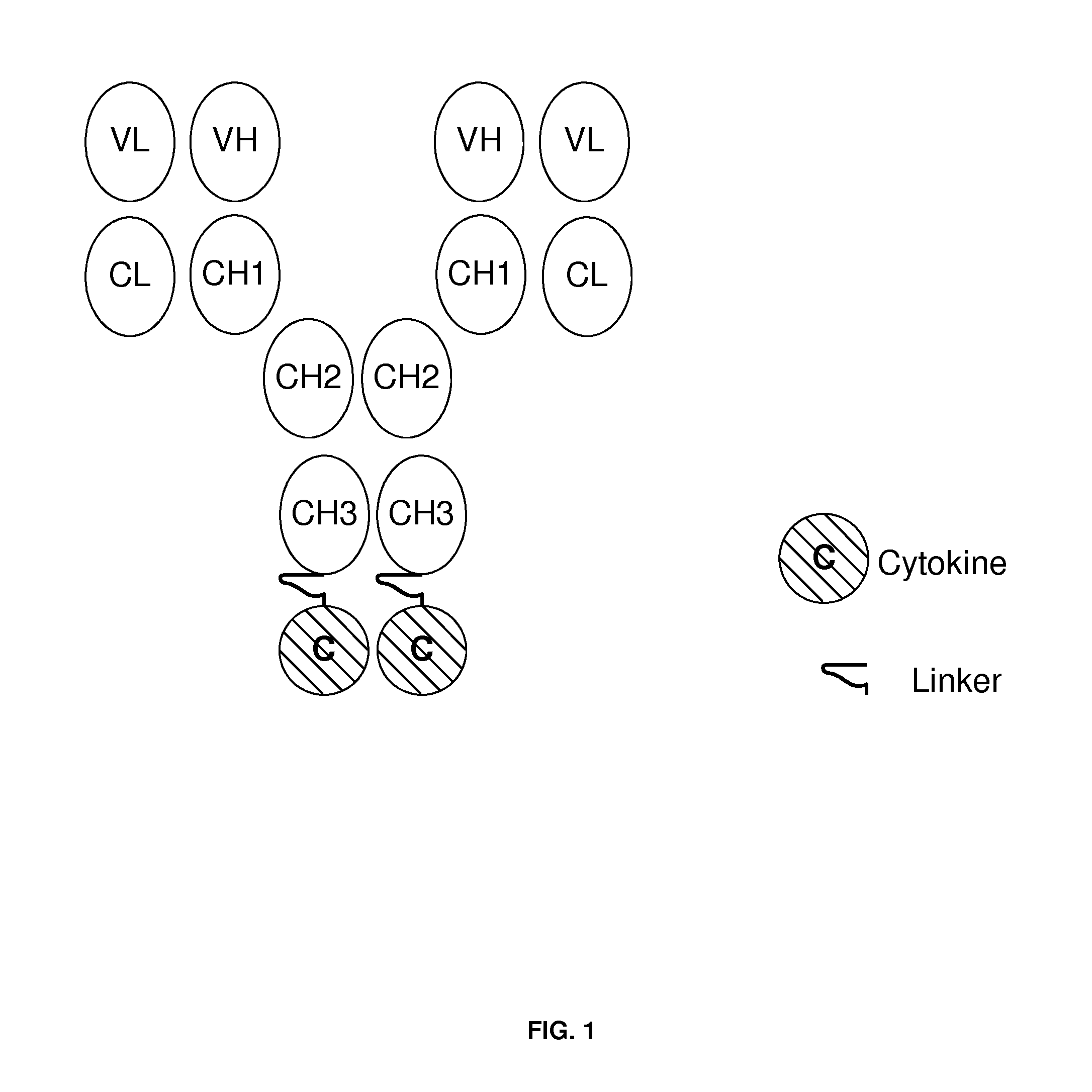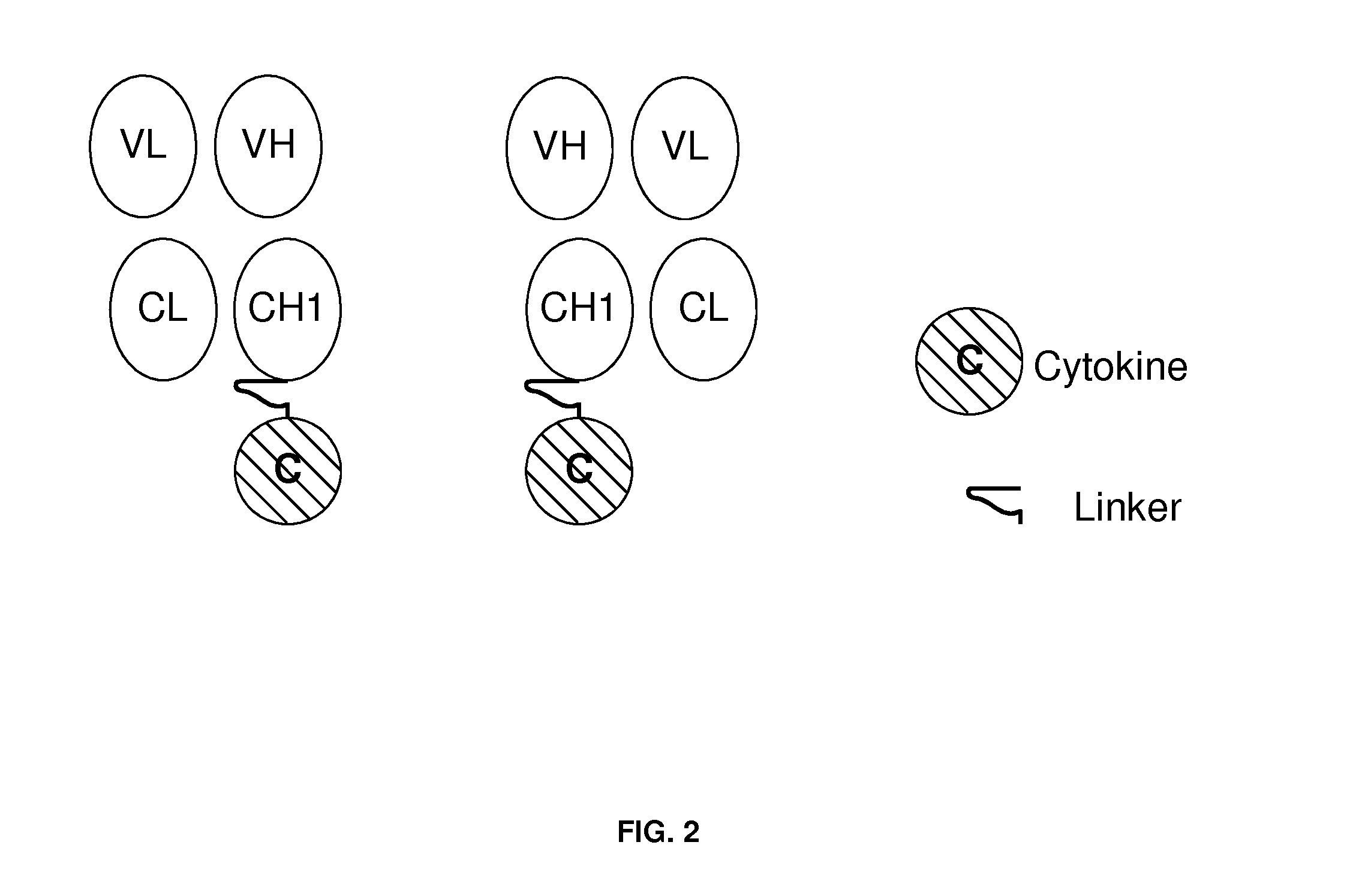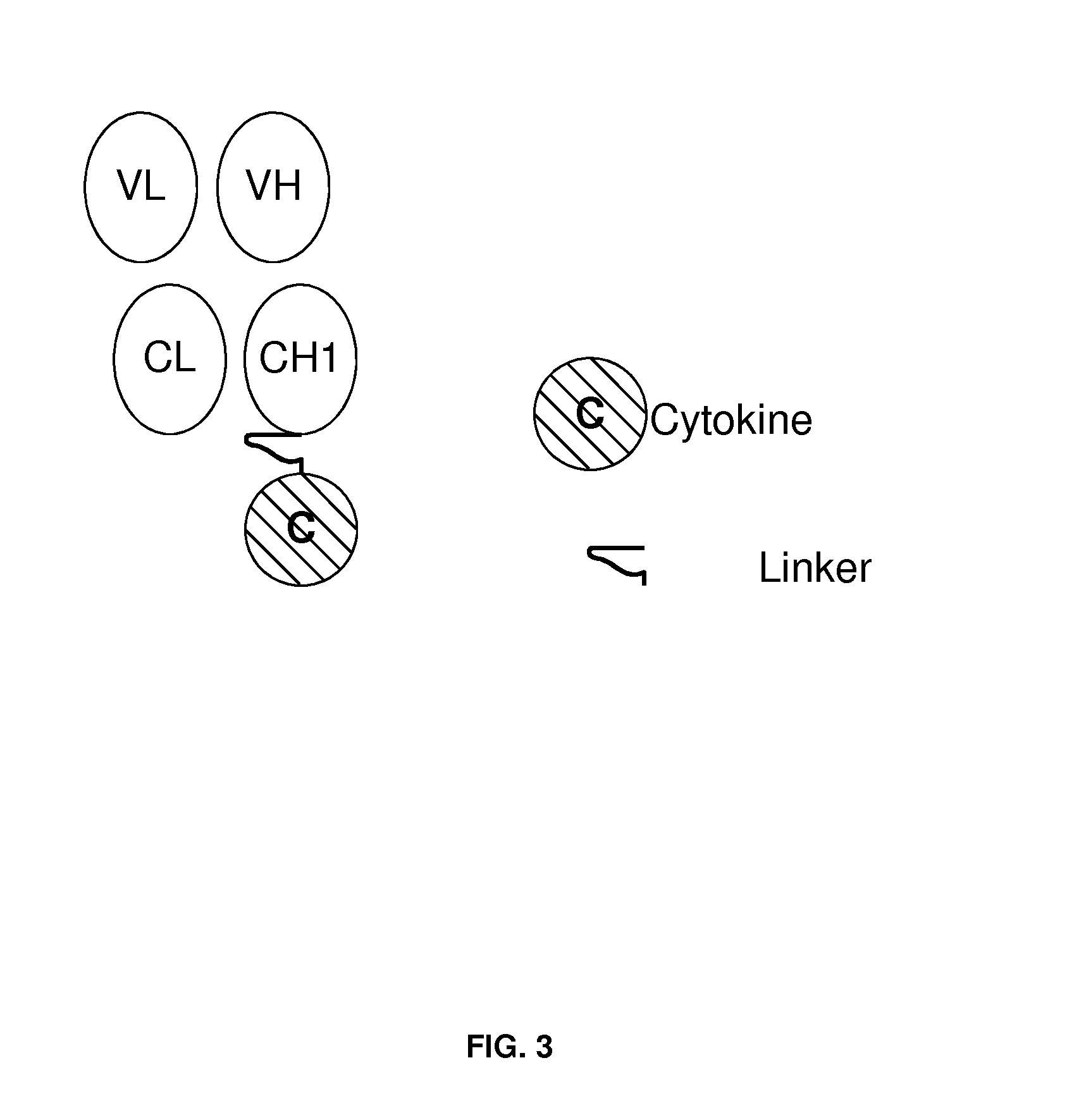Engineered antibody-interferon fusion molecules for treatment of autoimmune diseases
a technology of fusion molecules and autoimmune diseases, applied in the field of gene-engineered fusion molecules, can solve the problems of only partially effective agents in reducing the frequency and severity of relapse, and the rate of disease progression
- Summary
- Abstract
- Description
- Claims
- Application Information
AI Technical Summary
Benefits of technology
Problems solved by technology
Method used
Image
Examples
example 1
[0201]This example describes the preparation of genetically engineered fusion molecules comprising an interferon attached to an antibody which specifically binds an antigen which is differentially expressed or up-regulated on activated T cells, and wherein said interferon is attached to said antibody via proteolysis resistant linker. The molecules were initially constructed as depicted in FIG. 1, with the interferon molecule attached via a linker to the heavy chain of the antibody. The molecule in this example were prepared using methods and techniques well known and understood by one of ordinary skill in the art.
[0202]The preparation of the genetically engineered molecules of the present invention can be generally described as follows: the heavy chain of the antibody was recombinantly engineered with an IFN-β or IFN-α, or mutants thereof, at the carboxy-terminus using a proteolysis resistant linker, e.g., SEQ ID NO: 20 and SEQ ID NO: 21. After verifying that the fusion protein vect...
example 2
[0203]This example describes the evaluation and testing of the various Ab-IFN fusion molecules prepared as described in Example 1 at varying doses in various in vitro functional assays to identify Ab-IFN fusion molecules with the best activity to impair functions of T cells prepared from blood obtained from healthy volunteers and T cell lines previously described in the art (e.g., those described in the various references cited herein related to the target antigens and associated antibodies). Activity of the Ab-IFN fusion molecules will also be assessed for killing of activated T cells which express the antigen to which the Ab portion of the fusion molecule binds.
[0204]The fusion molecules demonstrating the best activity in the in vitro assays will then be tested in vivo to identify those fusion molecules with the best therapeutic efficacy. The in vivo activity of Ab-IFN fusion molecules will be evaluated in SCID-huPBMC mice immunized with tetanus toxoid. Effects of treatment with A...
example 3
[0212]In this example, a fusion molecule comprising: 1) an anti-CD70 antibody and wildtype IFN-β-1a molecule; 2) an anti-CD70 antibody and wildtype IFN-β-1b molecule; and 3) an anti-CD70 antibody and wildtype IFN-α molecule were constructed as depicted in FIG. 1 and as described in Example 1. In the fusion molecule constructs of this embodiment, the wildtype IFN-β-1a molecule comprised the amino acid sequence depicted in SEQ ID NO: 17, the wildtype IFN-β-1b molecule comprised the amino acid sequence depicted in SEQ ID NO: 18, and the wildtype IFN-α molecule comprised the amino acid sequence depicted in SEQ ID NO: 19. Constructs were made using the peptide linker SGGGGS (SEQ ID NO: 20), and constructs were made using the peptide linker AEAAAKEAAAKAGS (SEQ ID NO: 21). The anti-CD70 antibody comprised the heavy chain variable region amino acid sequence and light chain variable region amino acid sequence depicted in SEQ ID NO: 1 and SEQ ID NO: 2, respectfully.
[0213]The various fusion mo...
PUM
| Property | Measurement | Unit |
|---|---|---|
| Length | aaaaa | aaaaa |
| Composition | aaaaa | aaaaa |
| Cell death | aaaaa | aaaaa |
Abstract
Description
Claims
Application Information
 Login to View More
Login to View More - R&D
- Intellectual Property
- Life Sciences
- Materials
- Tech Scout
- Unparalleled Data Quality
- Higher Quality Content
- 60% Fewer Hallucinations
Browse by: Latest US Patents, China's latest patents, Technical Efficacy Thesaurus, Application Domain, Technology Topic, Popular Technical Reports.
© 2025 PatSnap. All rights reserved.Legal|Privacy policy|Modern Slavery Act Transparency Statement|Sitemap|About US| Contact US: help@patsnap.com



